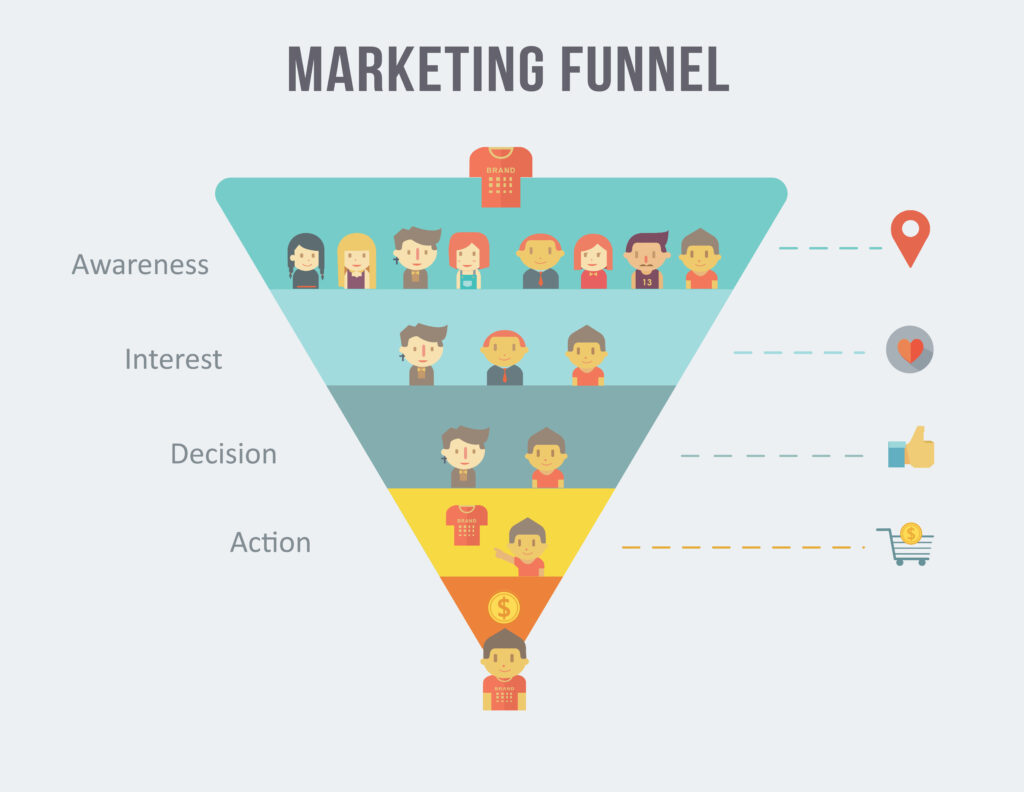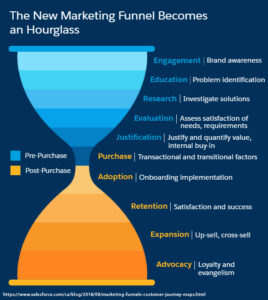According to a report from Hubspot, 61 percent of marketers report that lead generation presents one of their biggest struggles. The art of attracting customers and convincing them to buy from you becomes increasingly complex in today’s digital world. Customers continue to gain control over important parts of the buying cycle, as they can research their pain points, potential solutions, and companies on their own time and in their own way.
For brands to effectively generate leads, they should explore the different models of lead generation and how different strategies can positively impact their process to engage new prospective customers. Options exist beyond the traditional sales funnel. Here are the ideas to consider.
What Are the Different Types of Lead Generation?
There are three main models of lead generation that can help guide strategies for bringing in leads and converting them into customers.
The Sales Funnel

The sales funnel is the most traditional option and has been around for many years. The funnel consists generally of three main stages: awareness, consideration, and conversion. Some iterations will also incorporate loyalty and advocacy. Through this funnel, marketing and sales personnel can visualize how they cast a wide net with their awareness stage to bring prospects to the top of the funnel, knowing that only a percentage fill enter the conversion stage, and only a small percentage of that will actually convert to become customers.
The Hourglass

The hourglass took the marketing funnel and worked to adjust it to better reflect the importance of using existing customers to power the acquisition of new customers. It includes stages post-purchase where existing customers provide word-of-mouth recommendations and referrals to bring in new leads.
Flywheel Marketing

The flywheel is a newer design to communicate a more customer-centric lead generation process. It incorporates the stages of attracting, engaging, and delighting customers to build conversions. This model focuses on having a continuously-turning wheel that helps to store energy and power the conversion engine– the way a flywheel does in an engine.
The idea lies in having the wheel turn smoothly, without friction-causing events– like customer obstacles or inconveniences– that slow the wheel. This model emphasizes today’s lead generation best-practices of providing great experiences for existing customers, thus increasing the introduction of new customers through positive reviews and referrals. Rather than simply serving as the output at the end of the funnel, creating customers further powers the wheel to keep turning.
How to Choose the Right Lead Generation Model for Your Business?
The key to adopting an effective model lies in understanding customer expectations and business resources. Flywheel marketing, for example, emphasizes the importance of existing customers helping to bring in new customers. Focusing on customer service and driving an optimal customer experience to keep the wheel turning is the key to generating more customers. Therefore, the importance of customer service in this model cannot be underestimated. Brands must consider their capacity to create this customer-centric model both in service and in the content they produce.
The hourglass or funnel models, focus more on casting a large net to bring in as many people to the top of their funnel as possible and then using touchpoints to move them through the funnel. It requires understanding customer needs when they first encounter their pain point and then how those needs change throughout the journey.
Customer expectations should also factor into this decision. Businesses, particularly those in the B2B sector who build a business model based on service and maintaining relationships with their customers throughout the customer lifecycle, will want to think carefully about how they incorporate their customer service into their lead generation model.
Once you select the lead generation model that aligns best with your resources and customer expectations, you need to audit your existing marketing against this model. The different models of lead generation will help guide your content production as well as your marketing and sales campaigns. Scale your business and marketing so you can fill in any gaps that remain, building a strong consumer base that will power your organization forward.
Lead generation is a critical but challenging process for many businesses. Understanding the right lead generation model that fits your organization, and having the bandwidth to implement it can help you improve your strategy and guide your efforts. If you want to learn more about how to amplify your lead generation model, contact us at the Pollock Marketing Group.

